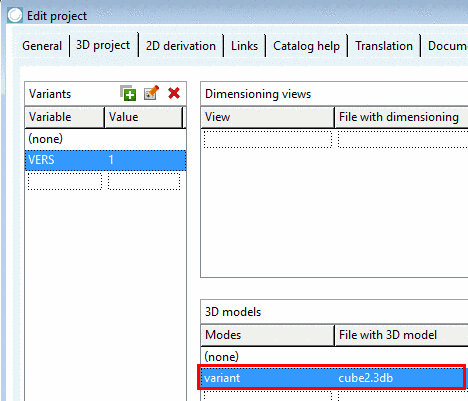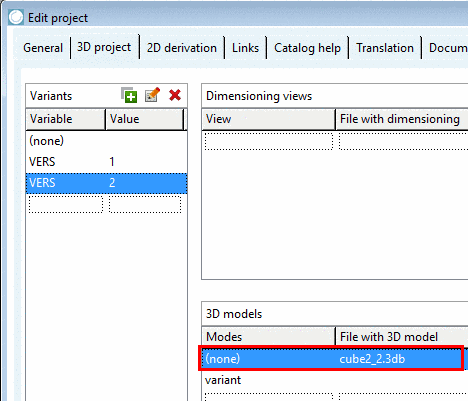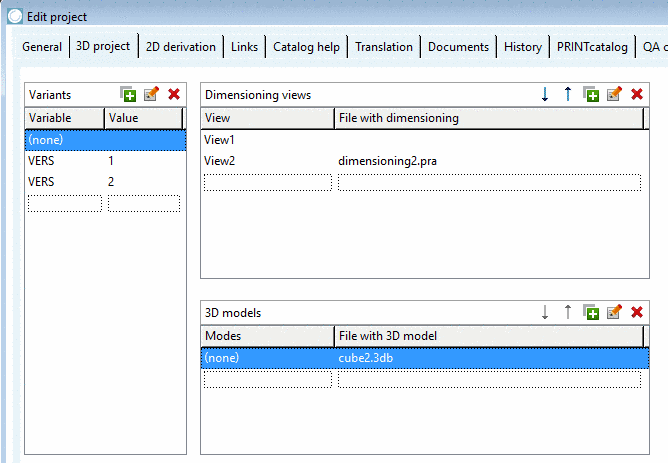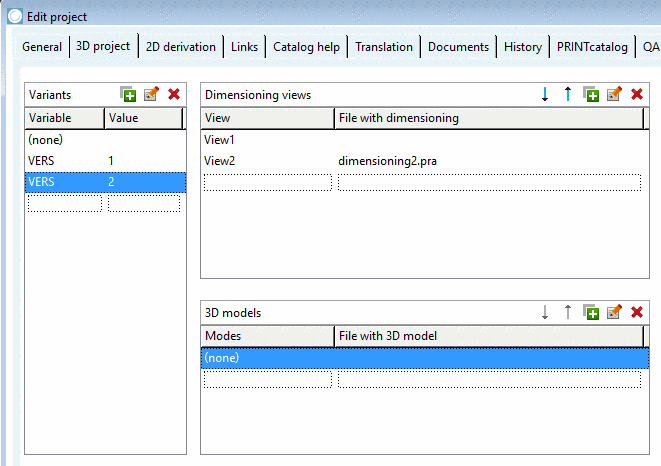Manual
Login
Our 3D CAD supplier models have been moved to 3Dfindit.com, the new visual search engine for 3D CAD, CAE & BIM models.
You can log in there with your existing account of this site.
The content remains free of charge.

Top Links
Manual
Declaration of dimensioning views
See Section 5.9.3.3.3, “Example: Variants of Dimensioning views ”.
Correct declaration in the case of 3D models:
Under Variants, you can use the default value (none) and create VERS 1 (exemplary naming), just as well you can leave (none) empty and create the rows VERS 1 and VERS 2.
When assigning the 3D model, simply use the default row under Modes "(none)".
A) Using variant (none) and VERS=1
B) Using variant VERS=1 and VERS=2
Another correct possibility is to create a row with dedicated name under 3D models -> Modes (which is not a real advantage over the use of the (none) row).
![[Note]](/community/externals/manuals/%24%7Bb2b:MANUALPATH/images/note.png) |
Note |
|---|---|
|
Faulty assignment of model: Once in Modes "(none)" and once in Modes "variant".
In Test Meta a Warning is displayed.
| |
If in the dialog area Variants a 3D model assignment exists for the variant (none), that variant is used as "fallback" for all cases, where variants do not have a model (in below example "VERS=2").













